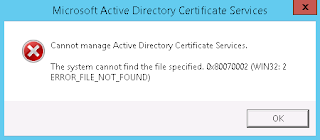Windows Server 2012 R2 Core Setup Part 3
This is the third and final article of the series, following the Windows Server 2012 R2 Core Setup Part 2, where we will update the server with the latest updates. In many Windows Server Core installations, I've seen people use Corefig, a very easy and handy utility to configure many things on a core server. I'm not going to demonstrate that though because this is a Powershell only guide! Instead we are going to use a Powershell module for Windows Update named PSWindowsUpdate. After you download the file, unblock it using: UnBlock -File -Path .\PSWindowsUpdate.zip and extract the contents. When the extraction is finished, import the module using: Import-Module .\PSWindowsUpdate Use the path to the module's top level directory, that is the directory that contains all the files in order to import it. Now that we have the PSWindowsUpdate module installed, we will focus on two of the commands, Get-WUList and Get-WUInstall The first one wil...
